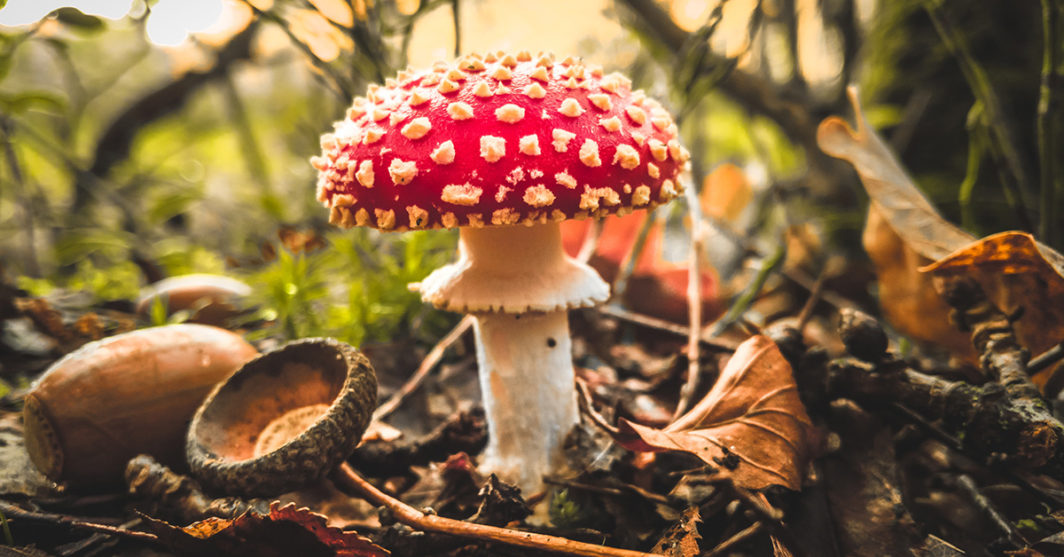Toadstools and mushrooms are a common sight in the UK. Whether you’re talking about the Victorian era or today, there are two instantly recognisable descriptions; one is that of the closed cup mushroom – and the other is the Amanita muscaria toadstool.
You could be forgiven though, for not recognising it from its official name but, if I told you it was red with white dots – you’ll know exactly which attractive one I’m talking about!
Otherwise known as the fly agaric mushroom, it’s the one we all associate with fairytale stories, pixies, and elves. Garden ornaments and children’s story books often illustrate the distinctive red cap and white gills as seats or homes for the fairy folk and gnomes! The Amanita muscaria toadstool has also been depicted in Renaissance paintings, as well as fairy paintings in the Victorian era too.
Often found in woodlands and grassy areas, this pretty toadstool recurs in the same place for several years. It initially appears as a white ball with pointed white warts, however, as it grows, the cap expands to reveal the red cap and the pointed warts are distributed throughout the cap. Sometimes you’ll also find plain red caps without warts attached – as animals and heavy rain can knock them off. The Amanita muscaria is visible from late summer, right through until the first hard frosts of winter appear.
So, is it a mushroom or a toadstool – as it’s often described as both! In reality, there is no real scientifically accepted different between a toadstool and a mushroom. In common use, however, the toadstool term is most frequently used with fungi that are poisonous or inedible – but the terms are used interchangeably.
The Amanita muscaria is also classified as poisonous. Although human death from ingestion is rare, there have been many cases of Amanita muscaria poisoning. Once parboiled, the toxicity levels decrease enough for it to be ingested – causing hallucinogenic experiences. It is thought that it is these hallucinogenic effects are what Lewis Carroll described in ‘Alice’s Adventures in Wonderland’ as well as being described in Charles Kingsley’s 1966 novel ‘Hereward the Wake’. It’s also been stated that Lewis Carroll was describing something he’d personally experienced!
Interestingly, Amanita muscaria is traditionally used as an insecticide. The cap is broken up and sprinkled into saucers of milk, left to attract insects. It contains ibotenic acid – something that not only attracts flies but kills them too.
Amanita muscaria continues to be one of the best-recognised fungi in the UK. And with it appearing as a key part of the Super Mario Bros video games and Disney’s Fantasia film, as well as in classic literature and paintings – I’m sure it’ll continue to be recognised for a long time!
The Woodland Trust has an excellent blog post, showing you the most common mushrooms in the UK, along with how to identify them. You’ll find it here: https://www.woodlandtrust.org.uk/blog/2017/08/types-of-mushroom/


